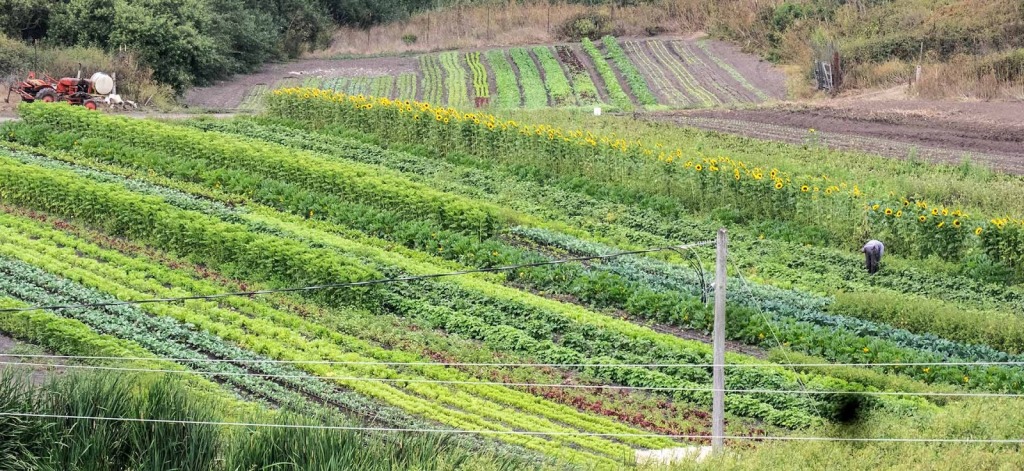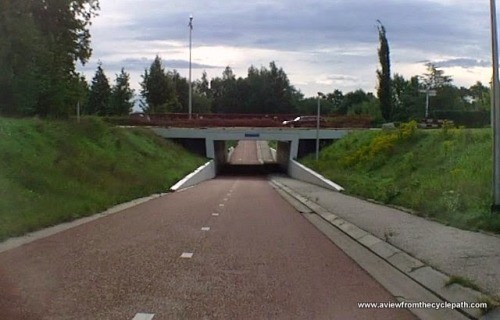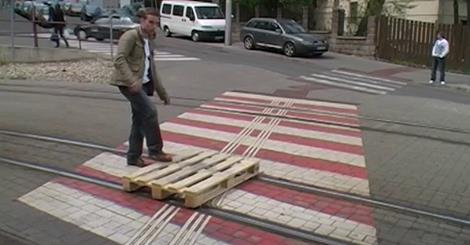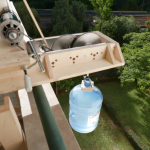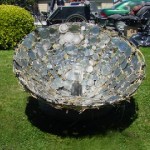It’s not an advantage that’s often emphasized, but organic fields are much more beautiful than monocultures. The picture above was shot north of Santa Cruz, USA. Photographer is Lloyd Kahn, author of the fascinating Shelter blog.
Cycling: Why Tunnels are Better than Bridges
- Tunnels offer faster journeys than bridges due to less climbing. Steeper gradients can be used than with a bridge because cyclists going into a tunnel first ride downhill and pick up speed which can be used to climb back out of the tunnel.
- Tunnels have a smaller height difference than bridges. Only need clearance for the height of a cyclist, not for trucks or trains plus electric lines.
- Tunnels take up less space than a bridge because inclines are shorter.
- Tunnels are easier to fit into an existing landscape.
- Tunnels offer protection from wind and rain.
- A possible disadvantage is low social safety. It is important that cyclists can see out of a tunnel before they enter it. There should be no turns within the tunnel, no-where for a potential mugger to hide. Obviously tunnels should also be well lit.
Picture: All crossings in Assen [The Netherlands] can be used without slowing down. This is one of the many cycle and pedestrian crossings of a major road. Four metre wide cycle-path, separate pedestrian path, gentle inclines, well lit and we can see right through for good social safety. Built in the 1970s, well maintained: last resurfaced 2012.
Quoted from a blogpost at “A view from the cyclepath”, which discusses Dutch standards for cycling tunnels and bridges.
Games on Disc More Energy Efficient than Downloads
“This research investigates the carbon footprint of the lifecycle of console games, using the example of PlayStation 3 distribution in the UK. We estimate total carbon equivalent emissions for an average 8.8-gigabyte game based on data for 2010. Two delivery scenarios are compared: the first examines Blu-ray discs delivered by retail stores, and the second, games files downloaded over broadband internet.”
“Contrary to current consensus that downloaded data will result in lower carbon emissions than distribution by disc, producing and distributing an average-sized game by Blu-ray disc in 2010 resulted in approximately 50 to 90% less emissions than downloading. The estimated carbon emissions from downloading only fall below that of Blu-ray discs for games smaller than 1.3 gigabyte. The study findings serve to illustrate why it is not always true that digital distribution of media will have lower carbon emissions than distribution by physical means when file sizes are large.”
Trolleytrucks in Los Angeles
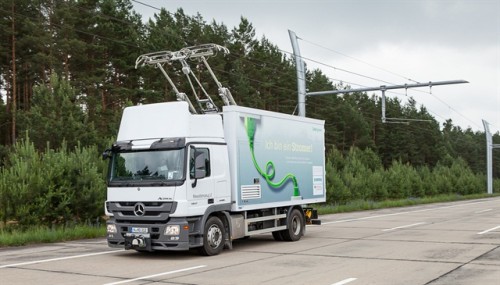 “A project testing a new way to power trucks with electricity is moving forward along selected highway lanes near the Ports of Los Angeles and Long Beach.”
“A project testing a new way to power trucks with electricity is moving forward along selected highway lanes near the Ports of Los Angeles and Long Beach.”
“The South Coast Air Quality Management District, which is the air pollution control agency for all of Orange County and the urban portions of Los Angeles, Riverside and San Bernardino counties, has selected a company to install a catenary system.”
“This is essentially overhead electrical lines that supply trucks with electric power, similar to how modern day trolleys or streetcars are powered on many city streets.”
Read more: Truck Electrification System to be Tested at Ports of Los Angeles, Long Beach. Thanks to Paul Best.
Previously:
Pallets On Rails
Tomáš Moravec modified a standard pallet to ride it on the tram tracks of Bratislava in Slovakia. Nothing beats the efficiency of a human powered vehicle on rails. Previously: Handcarts on rails. Thanks to Adriana Parra & Alice Prouvé.
Animals as the Answer to Recycling Food waste
Mountains of food scraps end up in landfills every day. While northern countries glorify attempts to facilitate this trash-to-treasure process using state-of-the-art technologies, Bobbili, a town in Northeast India, adopts a tech-free solution – a park using animals for solid waste management.
